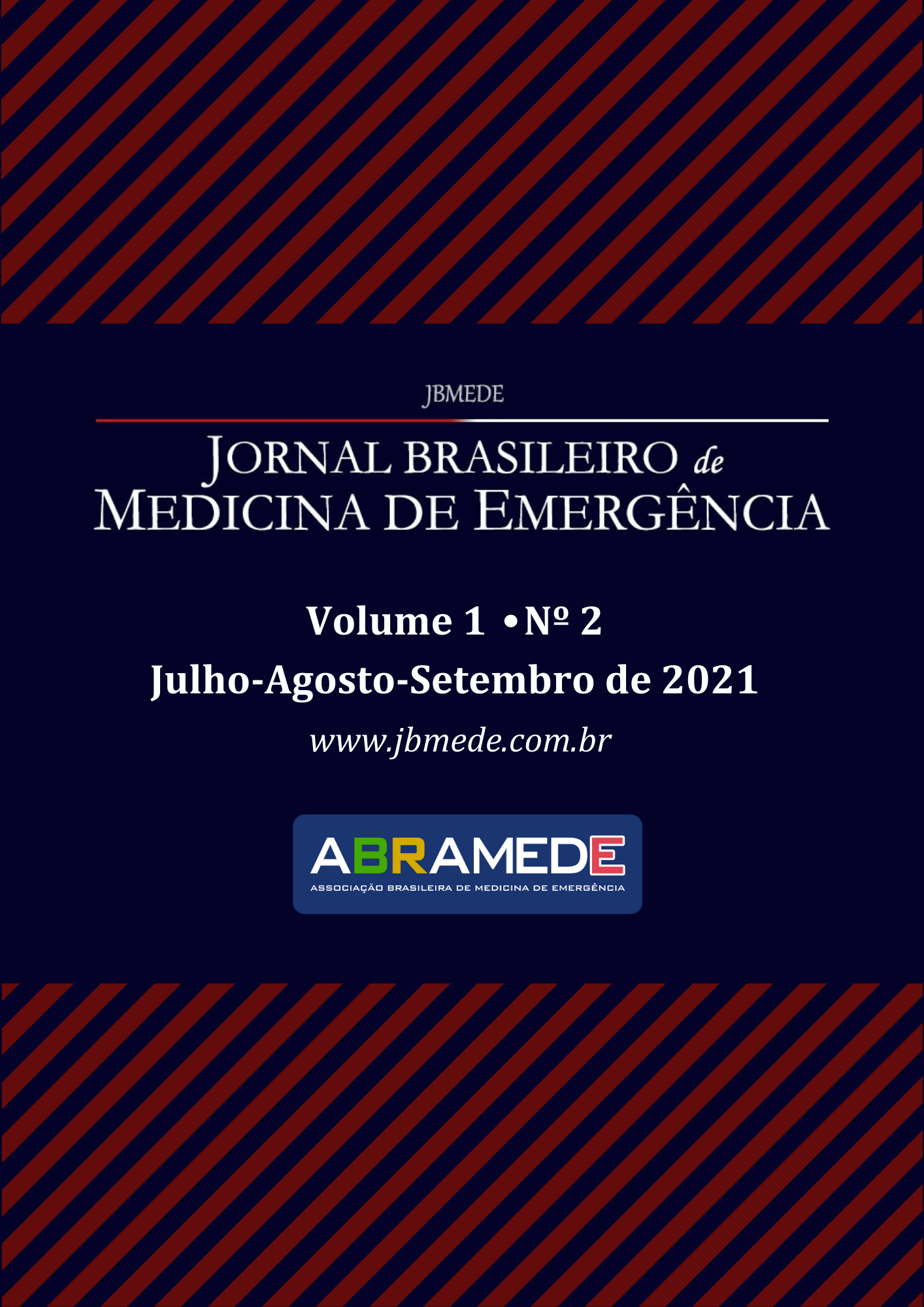Emergency medicine residency programs in Brazil: a national survey
Main Article Content
Abstract
Study objective: To describe the characteristics and curricula of Brazilian Emergency Medicine (EM) residency programs.
Methods: This was a national cross-sectional survey conducted between January and May 2021. A survey was distributed to residency directors with queries about the characteristics of their programs. Descriptive analysis was performed stratified by Brazilian regions.
Results: There were a total of 35 responses from the 39 (response rate = 89.7%) EM residency training programs in Brazil. Twelve (34.3%) programs were in the South region, 17 (48.6%) in the Southeast, 3 (8.6%) in the Central-West, and 3 (8.6%) in the Northeast. These 35 programs represented a total of 166 residency slots offered per year (median 4, range 2-24). All programs are of 3-year duration. Seventeen programs (48.6%) were officially launched in either 2019 or 2020. The estimated proportion of faculty with prior EM residency or board certification in EM was reported to be less than 20% in 26 of 35 (74.3%) programs. Only 5 rotations were mandatory across all 35 programs, including rotations in the emergency department (ED) intermediate acuity unit (“yellow” room), ED high acuity unit (“red” room), intensive care unit (ICU), obstetrics and gynecology, and trauma. Other rotations were highly heterogeneous across regions.
Conclusion: Emergency medicine residency is clearly growing in Brazil, and there is a relatively high level of heterogeneity across programs. There is a clear need for standardization of residency curriculum.
Article Details

This work is licensed under a Creative Commons Attribution 4.0 International License.
References
Nowacki AK, Landes M, Azazh A, Ritchie LMP. A review of published literature on emergency medicine training programs in low- and middle-income countries. Int J Emerg Med. 2013 Dec;6(1):26. DOI: https://doi.org/10.1186/1865-1380-6-26
Rybarczyk MM, Ludmer N, Broccoli MC, Kivlehan SM, Niescierenko M, Bisanzo M, Checkett KA, Rouhani SA, Tenner AG, Geduld H, Reynolds T. Emergency Medicine Training Programs in Low- and Middle-Income Countries: A Systematic Review. Annals of Global Health. 2020; 86(1): 60, 1–18. DOI: https://doi.org/10.5334/aogh.2681
Anderson P, Petrino R, Halpern P, Tintinalli J. The globalization of emergency medicine and its importance for public health. Bulletin of the World Health Organization. 2006; 84(10): 835–9. DOI: https://doi.org/10.2471/BLT.05.028548
Holliman CJ, Mulligan TM, Suter RE, Cameron P, Wallis L, Anderson PD, et al. The efficacy and value of emergency medicine: a supportive literature review. Int J Emerg Med. 2011;4(1):44. DOI: https://doi.org/10.1186/1865-1380-4-44
International EM Core Curriculum and Education Committee for the International Federation for Emergency Medicine. International Federation for Emergency Medicine model curriculum for emergency medicine specialists. CJEM. 2011; 13(2): 109–21. DOI: https://doi.org/10.2310/8000.2011.110446
Henrique Herpich, Lucas Oliveira Junqueira e Silva. Medicina de Emergência no Brasil e no Mundo. In: Medicina de Emergência para Graduação. Rio de Janeiro: Lucas Oliveira Junqueira e Silva, Hélio Penna Guimarães; 2020. p. 3–6.
Tannebaum RD, Arnold JL, De Negri Filho A, Spadoni VS. Emergency medicine in southern Brazil. Ann Emerg Med. 2001;37(2):223-228. DOI: https://doi.org/10.1067/mem.2001.112252
IBGE | Biblioteca | Detalhes | Sistema de contas nacionais : Brasil 2018 / IBGE, Coordenação de Contas Nacionais [Internet]. [citado 2 de agosto de 2021]. Disponível em: https://biblioteca.ibge.gov.br/index.php/biblioteca-catalogo?view=detalhes&id=2101766
ABRAMEDE. Titulados em Medicina de Emergência - AMB. Associação Brasileira de Medicina de Emergência (ABRAMEDE). Accessed on May, 2021. http://abramede.com.br/prova-de-titulo-medicina-2019/titulados/.

